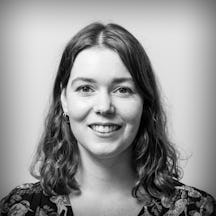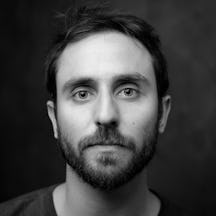The curators of the ‘Smoke and Mirrors’ exhibition talk about how stealthily our brains trick us, how hard magicians work to make their acts look effortless, and the show’s contemporary relevance.
Inside the minds of A R Hopwood and Honor Beddard
Words by Gwendolyn Smithphotography by Thomas S G Farnetti
- Interview
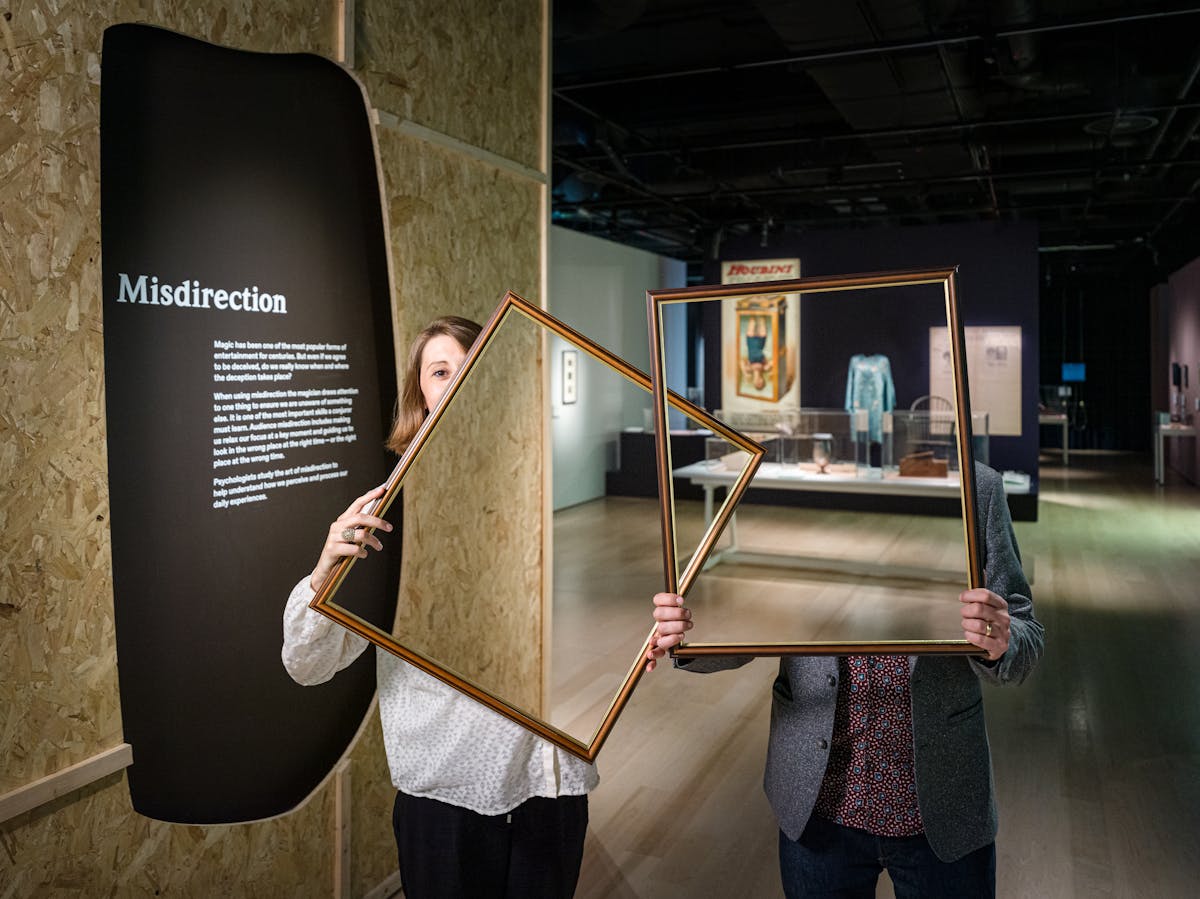
The curators of Wellcome Collection’s ‘Smoke and Mirrors’ exhibition, A R Hopwood and Honor Beddard, know that responses to the show, which explores the psychology of magic, will be intensely personal.
Performances of tricks aren’t only a crucial part of what’s on display – how the exhibition speaks to visitors echoes the magician-audience relationship, too. “My main ambition was for the show to be a call to critical thinking,” says Hopwood. “But the meaning is ultimately completed by the viewer – in the same way that the encounter between the magician and the audience completes the trick.”
Although the show’s concerns have a contemporary resonance – particularly in hints at the link between our susceptibility to deception and the current era of fake news – the curators wanted to produce topical work without, in Beddard’s words, “smacking people over the head and doing something that’s painfully worthy”.
The only overt reference to politics is a study into doctored photographs of Barack Obama and George W Bush, which shows how fake memories align along belief systems. “That felt like a very clear way to link the psychology of belief that we look at in the first section into something that is really current without mentioning Brexit or Trump,” laughs Hopwood.
More: How Western magicians draw on the mystique of the East to bolster their illusion.
They also developed a show-don’t-tell mentality: interactive challenges crop up throughout. These include a video where your attention is diverted from a gorilla that enters the shot by a task that focuses on the other figures on the screen, and a virtual card trick that shows how magicians influence an audience’s decisions without them realising. These let visitors physically experience how fallible the human mind can be.
“Through the show’s narratives, doubts and questions will hopefully start to build up in visitors’ minds,” says Beddard. “Then it’s not much of a stretch to go from thinking, okay, I’m actually really quite vulnerable in terms of my perception. If I know that these scenarios play out in contexts other than magic, where does that leave me?”
Crucially, ‘Smoke and Mirrors’ isn’t about mocking human gullibility. “We didn’t want anybody to be able to point their fingers at people and say: look how silly they are for being deceived,” Beddard adds. “You need to realise that it happens almost without you noticing.”
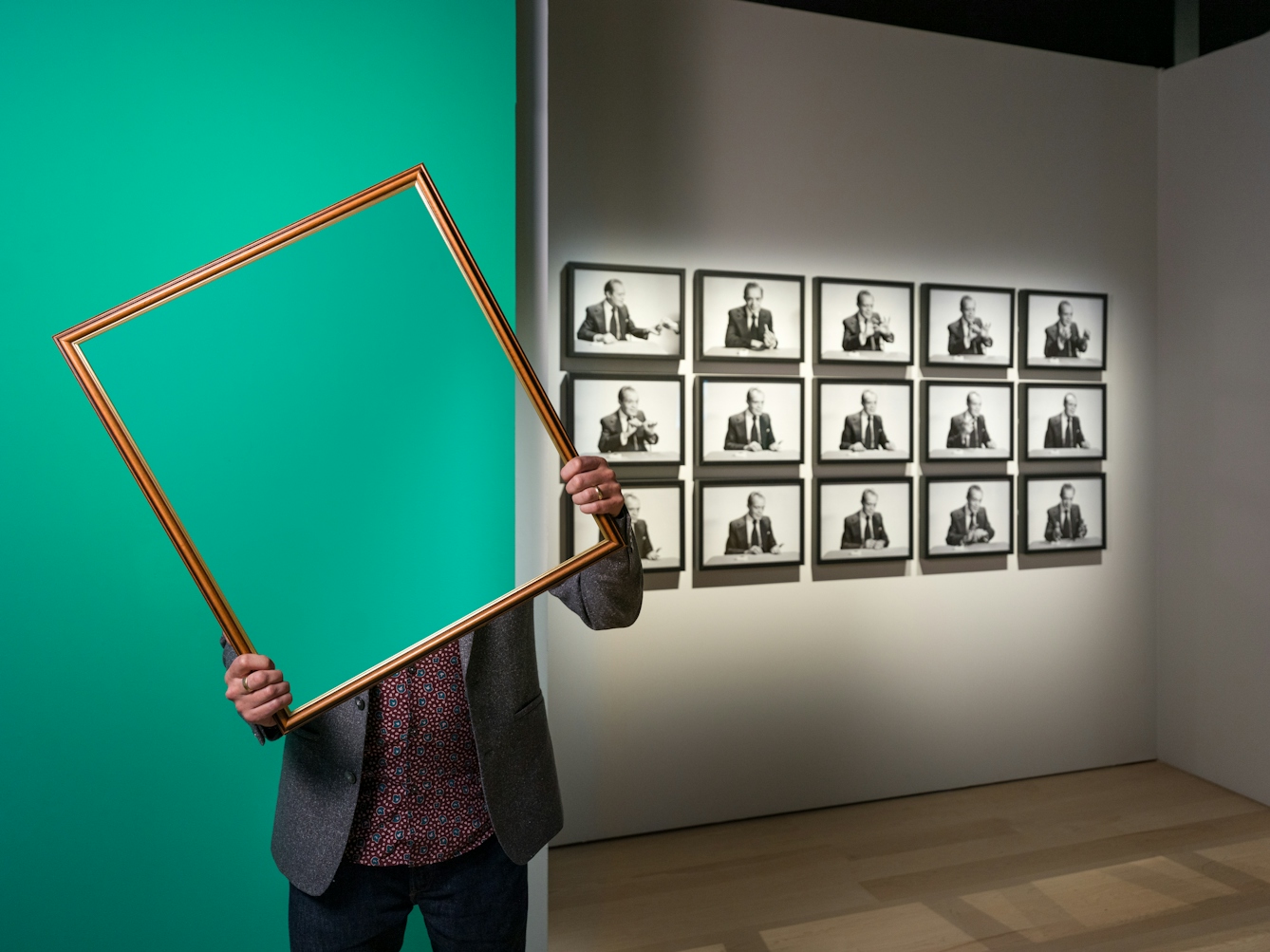
Science and spiritualism
The show revels in knotty contradictions. For example, one of Hopwood’s favourite stories is of psychical researcher Richard Hodgson, who had a “really extraordinary ability to root out fraud” but who also became entranced by Boston medium Leonora Piper.
Then there’s the broader question of spiritual catharsis versus evidence and science, and the cognitive dissonance that enables people to value both simultaneously. “If you look at something like the posters by the magicians the Davenport brothers, it’s clear they’re advertising a piece of theatre,” says Beddard. “And yet people found spiritual catharsis within it, despite knowing it was staged. How you can hold those seemingly incompatible views at the same time was a big question.”
Moreover, showing both sides of the picture was important, such as when exploring Houdini’s exposure of supposed medium Margery Crandon. Being in touch with Crandon’s granddaughter enabled them to scrutinise her motivations – did she genuinely believe she was psychic, for instance? – alongside Houdini’s perspective.
To give a sense of Crandon’s experience of events, there are cases displaying her personal scrapbooks and correspondence, including a fascinating 1924 letter from Houdini arranging a test of her act, where he assures her that she won’t be subjected to “any inconvenience of physical discomfiture”.
Naturally, the curators each have favourite exhibits. For Beddard, it’s the eye-grabbing posters. “It really shows what a hold magic had over people.” She’s also particularly fond of the Tommy Cooper stage plan, and loved her visit to his archives at the V&A where she witnessed the research and planning that went into his work. “It brought home the thousands of hours that go into producing an act that appears effortless when you’re on stage.”
Meanwhile, Hopwood favours the John Nevil Maskelyne lantern slides. “He’s the first example of the magician-investigator that you look at, and here he is, this very smartly attired Victorian gent, tied to a chair, showing how you can create spiritualistic effects through simple acts of escapology. They’re really startling and vivid images and we’re not sure they’ve been seen much before.”
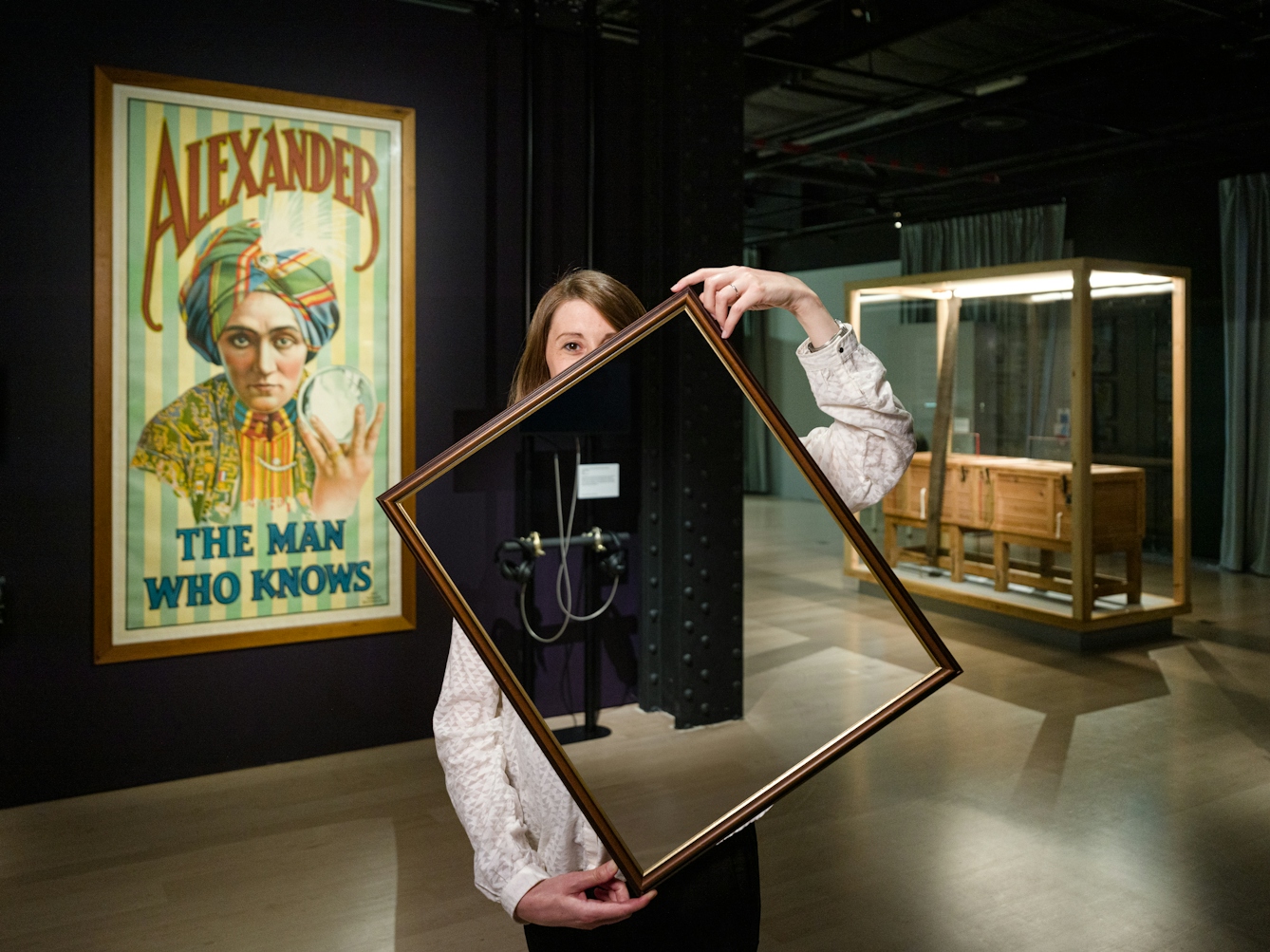
Psychology, storytelling and the paranormal
One of the greatest curatorial challenges was reducing the story down to its key narratives. “You realise that at the heart of this matter is the psychology, and then you have to think about how various figures fit into the psychology rather than making it about them specifically,” says Beddard.
The duo’s varied backgrounds helped here. Beddard appreciated the opportunity to ‘mine’ Hopwood’s rich body of research (he is behind the touring exhibition ‘False Memory Archive’ – which, like ‘Smoke and Mirrors’, explores memory and misdirection – as well as being involved with Goldsmiths, University of London’s research into paranormal beliefs). Meanwhile, she drew on her seven years of storytelling experience as an in-house curator at Wellcome to hone the structure.
Magicians and psychologists are arguably investigating the same thing – they just talk about it in different ways.
“Our expertise lies in exhibition-making, storytelling, communicating. It’s important you always keep one foot outside the expert camp so you can put yourself in the mind of the visitor.”
A vital message of the show concerns the unexpected parallels between magicians, psychics and scientists. “Magicians and psychologists are arguably investigating the same thing – they just talk about it in different ways and use different language,” says Beddard. Hopwood agrees, referencing a period in the late 19th century that saw an overlap between beliefs in spiritualism, the growth of the entertainment industry and the founding of new scientific organisations.
“Across magicians and scientists, you had the whole range from non-believers, the uncertain and believers. They all shared a faith in science to be able to root out where there was fraud.” Scientists trusted their powers of observation but were also taken in by what mediums were doing; it wasn’t until magicians intervened that trickery was revealed. “It’s an early example of interdisclipinarity,” says Hopwood.
While the show isn’t about dividing people into good guys and bad guys, it is fairly clear on one point: evidence does matter. Nevertheless, the route to rigour can be surprising. “The best sort of evaluation of evidence could be through fairly unexpected means,” says Hopwood. “Through a collaboration of magicians and scientists, for instance.”
About the contributors
Gwendolyn Smith
Gwendolyn Smith is a freelance culture journalist based in London.
Thomas S G Farnetti
Thomas is a London-based photographer working for Wellcome. He thrives when collaborating on projects and visual stories. He hails from Italy via the North East of England.
